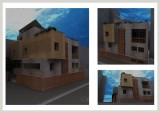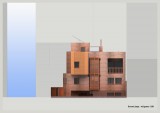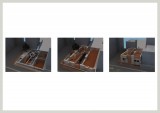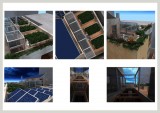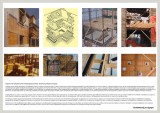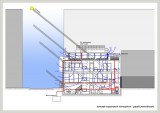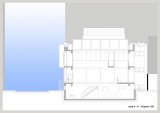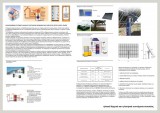Supervisors:
2009
Through the years people were constructing homes, using thermal mass, insulation and light direction for their benefit. After the last half of the 20th century this technical ability was given up having as a result the enclosure of the construction techniques in the service of the economical needs.
Today, as the “environmental future” seems unsure because of the unstoppable use of the limited natural resources and the energetic end, we try to go back to the basic constructional, bioclimatic principles by the creation of new buildings based on bioclimatic principles.
The effects of design outside the principles of bioclimatic and energetic balance, they also add and speed up the negative development of the metabolic. The construction firms, the architects and the owners give a small amount of attention to the design of buildings which embody the basic principles and technology for the right use of the natural resources and the economy of energy.
A different approach, this of “energy efficient housing” can drastically change the weight of the constructional technology for the environmental negative balance.
After careful study for the construction of the building, special attention has to be given to three basic points:
- The way of attaching the house to the environment
- The technical and aesthetic resolution of the thermal comfort parameters for every single chronically period
- The right and technically logical choice of materials.
The other, added parameters of design, as the optical comfort, the waste control and the water circle, change according to the geographical position, the social level and the economical ability of the owners.
The building cost finally, for the bioclimatic house is much higher than a common one, having in mind the obvious economical benefits of the investment through a period of 5 to 20 years.
Design proposal
More specifically the design proposal describes a energy efficient home in the centre of the city of Larissa on an angular space with north-western face. The building is attached on the east and south side to other houses. The house has two floors and a basement with a small room on the roof garden and its total area is 450m². It will house a four member family with artistic and ecological interests. It occupies the biggest part of the space given, and some trees will be planted for shadowing and wind protection.
For the design of the building we adopted the principles of bioclimatic architecture including south facing windows and skylight for direct thermal benefit as also an internal sun space (atrium) which connects to all the levels of the house.
The design goal is to reduce the effects of the local climate, during the summer period as also during the winter. A building in the centre of a big city presents low consuming during the period of high thermal needs because of the design and the embodied pathetic systems, and the users’ behavior.
A characteristic point of the design proposal is the thermal system with the energetic fire place.
The design of interior spaces was completed by emphasizing to specific details of their use. It is obvious the clear subdivision of the building in zones on each level:
Basement - play zone and workshop space
Ground floor – food and relaxing zone
First floor – sleeping zone
Roof terrace – green zone
We achieve to complete high levels of economy for heating, cooling and direct sunlight.
House Construction
The construction of the cell is based on solid walls of 50cm thickness, so that internal air flow is limited as well as the glazed facades which remain sources of thermal losses on the North side of the building.
The constructional proposal includes a construction which adopts the use of ecological materials with important energetic benefits and economy for the construction. The concrete frame of the building is covered by straw bales joined together with a wooden frame.
On the construction techniques we include direct air flow through the building and the atrium.
The owners and future occupants report that the house has to achieve thermal comfort of 19 ˚C. Τhey also reported that bedrooms should achieve high temperatures, which is a fact of the warm air rising up because of the layering.
